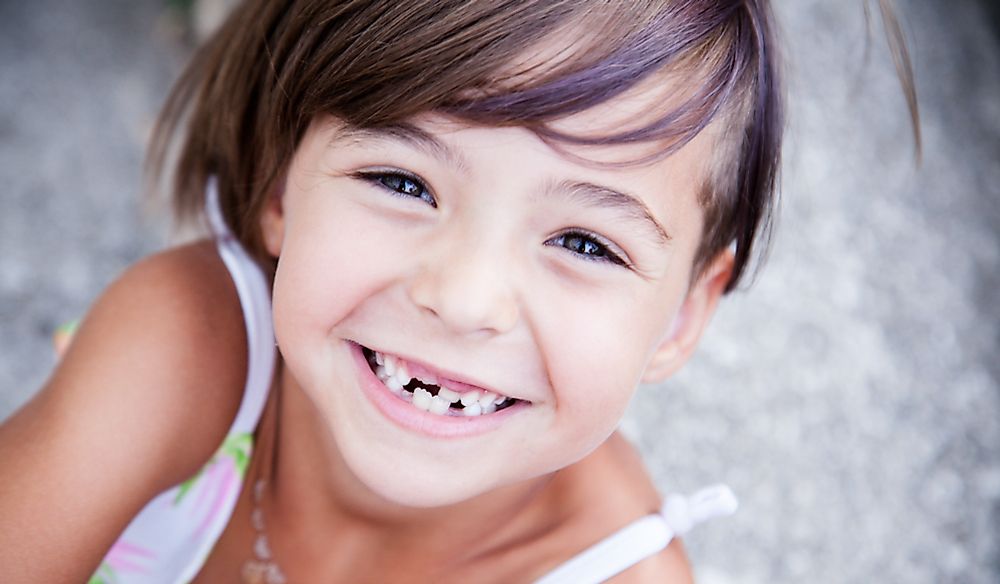What Is a Diphyodont?

Teeth are the hardest substances in the mammal’s body. Other than breaking down food by crushing and cutting them, teeth play a significant role in speech development in human beings. The four types of teeth (premolars, molars, canines, and incisors) are embedded in the upper and lower jaws and are covered by gums. These teeth differ in shape and size depending on the functions. Diphydonts are animals which get two sets of teeth (deciduous and permanent) in their lifetime. Most mammals including human beings are diphyodonts. They differ from monophyodonts which have one set of teeth in their entire life and polyphyodonts whose teeth get replaced regularly.
Deciduous Teeth
Deciduous teeth also referred to as temporary, baby, or milk teeth are the first set of teeth which diphyodonts get while young. These teeth develop during the embryonic stage and only become visible during childhood. These teeth can be replaced with permanent teeth or even remain functional for numerous years in the absence of permanent teeth. These teeth are crucial in the development stage of the mammal’s mouth.
In diphyodonts, the replaced teeth vary by species. The posterior incisors of hares are replaced while the anterior ones are not. The twenty milk teeth in human beings are usually replaced by a new set of thirty-two permanent teeth. The milk teeth play a vital role in the development of speech in children. The deciduous teeth are made up of secondary molars, first molars, canines, lateral incisors, and central incisors. Other than the second and first molars which are replaced by premolars, all the other teeth are replaced by their adult counterparts.
Permanent Teeth
Permanent teeth are the other set of teeth which replace the milk teeth in diphyodonts. Human beings and other primates have thirty-two permanent teeth including the four mandibular and four maxillary incisors, two mandibular and two maxillary canines, four mandibular and four maxillary premolars, and six mandibular and six maxillary molars. In human beings, the first adult teeth appear around the age of six, and then the mouth will undergo a transition phase with both milk and permanent teeth until the last one is replaced. The first adult teeth to erupt are the molars which develop right behind the last deciduous molar teeth.
Conditions Affecting Diphyodonts
Hyperdontia
Hyperdontia is a dental condition which is characterized by having excess teeth. The extra teeth which develop on the dental arches can end up affecting the enamel organ. Scientifically it’s defined as any odontogenic structure that is developed from the teeth germ in addition to the normal number of teeth in a dental arch. The excess teeth might be non-symmetrical or symmetrical and erupt anywhere on the dental arches.
Hypodontia
Hypodontia is a dental condition which is characterized by the lack of one-or-more teeth, and it can affect the permanent dentition. It is a common condition which is very challenging to manage. Hypodontia describes numerous disorders including the absence of teeth (anodontia) and missing one tooth. People with this condition exhibit numerous other anomalies like microdontia.











